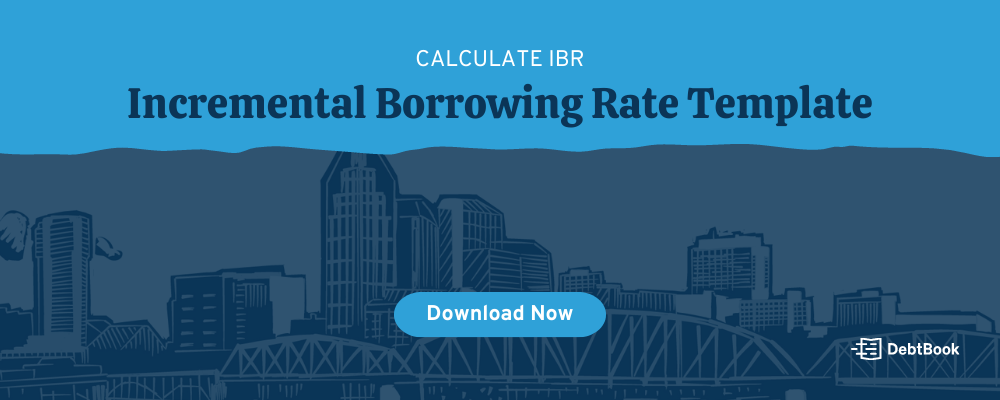Financial reporting for government entities can be intricate, with distinct requirements that involve careful ongoing compliance. Among these, GASB 87 and GASB 96 stand out as important standards that redefine how public sector organizations account for leases and subscription-based information technology arrangements (SBITAs), respectively.
In this blog, we’re going to demystify GASB 87 and 96, breaking down their complexities and contract language into actionable insights. Even though you’ve already implemented both standards by now, understanding GASB 87 and GASB 96 is important for ongoing compliance and accurate financial reporting.
What is GASB 87?
GASB 87, introduced by the Governmental Accounting Standards Board (GASB), represents a significant shift in the accounting and reporting of lease agreements for government entities. Prior to this lease standard, leases were categorized as either capital or operating leases. GASB 87 eliminates this distinction and introduces a single model for lease accounting, aimed at improving transparency and comparability across financial statements.
Effective since June 15, 2021 (after being delayed from its original date of December 15, 2019), GASB 87 requires that all leases longer than 12 months be recognized in the statement of financial position as lease liabilities with an associated lease asset, referred to as a "right-to-use" asset. They are also required to consolidate lease agreements, including, but not limited to, copiers, vehicles, real estate, water towers, and cell leases, for both lessees and lessors.
This standard applies to all state and local governments and demands that lessees and lessors record the present value of future lease payments as a liability, since the lease reflects the right to use the underlying asset over the lease contract term.
|
Key Components of GASB 87
|
Implications of GASB 87
With GASB 87, organizations need to review each lease contract and possibly reclassify and adjust their financial statements to comply with the new rule from the Government Accounting Standards Board. It also affects budgeting, financial analysis, and performance metrics. Public sector entities have had to invest in training, update their policies and procedures, and, in some cases, acquire or upgrade financial software to accommodate the new lease accounting requirements.
GASB 87 brought a new level of transparency to how organizations account for leases, aligning public sector accounting practices more closely with the private sector and international standards. Luckily, GASB 87 software can help your organization simplify compliance.
What is GASB 96?
GASB 96 became effective for the fiscal years beginning after June 15, 2022. This standard specifically addresses SBITAs— a common method by which governments access IT software and infrastructure.
Now that cloud computing and software-as-a-service (SaaS) models are increasingly common, GASB 96 provides much-needed financial clarity and guidance for governmental entities. The standard requires that SBITAs are reported on the face of financial statements to enhance the relevance and reliability of an organization’s SBITA information.
|
Key Components of GASB 96
|
Impact of GASB 96
With GASB 96, organizations are now able to reflect their true obligations related to IT subscriptions on their financial statements, offering stakeholders a complete view of the entity’s finances in their annual comprehensive financial report. This standard requires that organizations review their IT arrangements, identify all subscriptions that fall under GASB 96, and adjust their accounting records accordingly. Explore a GASB 96 implementation guide to better understand how you can comply with these standards.
The standard also aims to standardize how organizations report these tech-centric lease-like transactions, which often have complex pricing models and terms. With GASB 96, entities not only ensure compliance but also embrace financial reporting that mirrors their operational reliance on evolving technology.
GASB 96 highlights the merging of technology and accounting standards, recognizing the unique nature of IT subscriptions in government operations. It requires great attention to detail and a proactive approach from financial professionals to ensure accurate and transparent reporting. Discover how GASB 96 software can help you effortlessly manage your SBITAs.
Similarities & Differences Between GASB 87 and GASB 96
While GASB 87 and GASB 96 are similar in that they both standardize how organizations report long-term commitments on their financial statements, they cater to different types of agreements—leases of tangible assets for GASB 87 and subscriptions for IT services for GASB 96.
Some other notable similarities between GASB 87 and 96 include:
- Term Calculation: To calculate the term for a GASB 87 or GASB 96 agreement, entities must measure the term based on each standard's respective restatement date.
- Liability & Asset: GASB 87 and GASB 96 agreements share similar methodology for the liability and asset calculations.
- Subscription and Non-Subscription Components or Multiple Subscription Components: GASB 96 treats subscription and non-subscription components or multiple subscription components in the same regard as GASB 87 lease, non-lease, and multiple lease components.
According to GASB.org, here are the key distinctions between the two standards:
Nature of Assets
GASB 87 pertains to tangible assets. This includes property, equipment, and other physical assets that are leased.
GASB 96 deals with intangible assets, specifically focusing on subscription-based information technology arrangements like cloud services and SaaS models.
Scope of Application
GASB 87 has a broad application across various types of lease agreements, except for specific exclusions like leases of intangible assets and leases with a term of 12 months or less.
GASB 96 applies exclusively to contracts that convey control of the right to use a government’s IT software delivered by remote access.
Recognition of Assets and Liabilities
Under GASB 87, a right-to-use lease asset and lease liability are recognized, with the asset valued at the amount of the lease liability plus any initial direct costs incurred by the lessee.
GASB 96 requires the recognition of a right-to-use IT asset and a corresponding subscription liability, including any implementation costs that are necessary to place the asset into service.
Financial Statement Presentation
GASB 87 requires lessees to report lease assets in the statement of net position, and lease expenses in their statement of activities.
GASB 96 mandates that IT subscription assets and liabilities are reported in the statement of net position and expenses related to subscriptions in the statement of activities, separate from interest on the subscription liability.
Disclosures
GASB 87 focuses on providing information about the leasing arrangements, such as the total amount of lease liabilities and the related right-to-use lease assets.
GASB 96 demands disclosures around the nature and terms of subscription-based IT arrangements, including the associated liabilities and assets.
Tips for Ongoing Compliance with GASB 87 and GASB 96
Maintaining compliance with GASB standards can be a complex task, requiring a detailed understanding of the requirements. To ensure ongoing compliance with GASB 87 and GASB 96, here are some practical tips to consider:
Implement Robust Tracking Systems
Use software solutions, like DebtBook, that can manage lease and IT subscription data, automate calculations, and assist with the ongoing recognition and reporting requirements.
Stay on Top of Modifications and Terminations
Monitor any modifications to existing contracts, lease renegotiations, or terminations that may affect the reporting and disclosure under GASB 87 and GASB 96.
Train Your Team
Provide ongoing training for staff responsible for financial reporting on the key aspects of GASB 87 and GASB 96 to ensure that they’re well-equipped to handle the related accounting tasks.
Having a modern software system in place that manages these standards can make ongoing training much easier for new team members rather than having to train through spreadsheets and other time-consuming, and challenging, processes.
Review and Reassess Regularly
Schedule regular reviews of your leases and IT subscriptions to ensure ongoing compliance, especially as new contracts are entered or existing ones are modified.
For more information on ongoing compliance with GASB 87 and GASB 86, check out these articles: GASB 87 Ongoing Compliance and 3 Factors to Consider for Ongoing GASB 87 and GASB 96 Compliance.
Conclusion
Understanding and complying with GASB 87 and GASB 96 are important for ensuring transparency and accuracy in governmental financial reporting. While these standards brought significant changes to how leases and SBITAs have historically been accounted for, they also offer a framework that reflects the evolving nature of public sector operations. DebtBook also offers lease management for ASC 842. Browse ASC 842 software to remain compliant with regulations.
By staying informed, adapting accounting practices, and implementing strong internal controls, organizations can meet compliance requirements and maintain the trust of their stakeholders.
Disclaimer: DebtBook does not provide professional services or advice. DebtBook has prepared these materials for general informational and educational purposes, which means we have not tailored the information to your specific circumstances. Please consult your professional advisors before taking action based on any information in these materials. Any use of this information is solely at your own risk.




.jpg)





.jpg)
.jpg)
.jpg)
